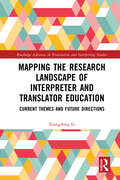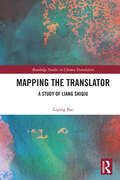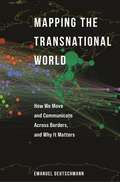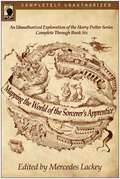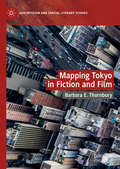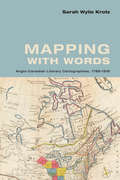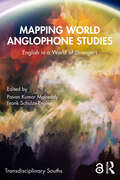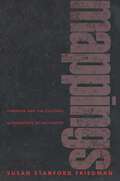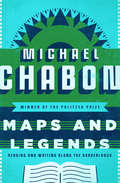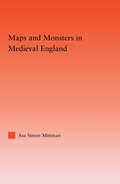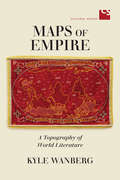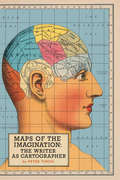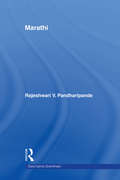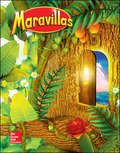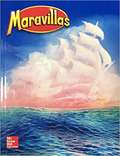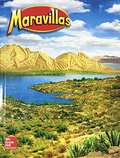- Table View
- List View
Mapping the Research Landscape of Interpreter and Translator Education: Current Themes and Future Directions (Routledge Advances in Translation and Interpreting Studies)
by Xiangdong LiMapping the Research Landscape of Interpreter and Translator Education explores research themes in interpreter and translator education based on a systematic review of more than 20 years of research in the field. The book focuses on the ten research themes on the chain of curriculum development and evaluation, specifically, market needs analysis, content conceptualisation, learning needs analysis, teaching objectives, teaching beliefs, syllabus design, material development, instruction and/or effect, assessment, and course evaluation. It also touches upon the other 14 research themes, for example, trainer education, admissions, learner traits, thesis and research training, pre-service preparation, certification, in-service training, client education, and translation and interpreting as a means to education. The discussion of each theme is accompanied by a synthesis of its sub-themes, typical research cases, research prospects, and suggested reading. As a guide, it supports teachers by illustrating how to combine teaching and research in university settings and offers ways to integrate research into pedagogy.This book is a go-to reference for trainers and a hands-on guide for academics, researchers, and postgraduate students specialising in translation and interpreting curriculum development and pedagogy research.
Mapping the Translator: A Study of Liang Shiqiu (Routledge Studies in Chinese Translation)
by Liping BaiIn Mapping the Translator: A Study of Liang Shiqiu, the writer studies Liang Shiqiu (1903–1987), who was not only a famous writer and important critic but also one of the most prominent translators in China in the 20th century, most notably the first Chinese to finish a translation of The Complete Works of William Shakespeare. Based on primary sources, this research covers issues related to the historical, cultural, cognitive and sociological dimensions of translator studies. It investigates Liang’s translation poetics; the influences of possible patrons and professionals on him; the relationship between Liang’s ideology, the dominant ideology and his translation; Liang’s debates with Lu Xun about and beyond translation criteria, and whether there is inconsistency or possible contradiction in Liang’s translation poetics. This book also analyses the similarities and differences between Liang Shiqiu and Wu Mi–two followers of Irving Babbitt–in terms of translation poetics, and further explores the reasons leading to such differences. This book is targeted at scholars and students, both undergraduate and postgraduate, in the fields of translation studies, Asian studies, Chinese studies, and literary studies.
Mapping the Transnational World: How We Move and Communicate across Borders, and Why It Matters (Princeton Studies in Global and Comparative Sociology)
by Emanuel DeutschmannA study of the structure, growth, and future of transnational human travel and communicationIncreasingly, people travel and communicate across borders. Yet, we still know little about the overall structure of this transnational world. Is it really a fully globalized world in which everything is linked, as popular catchphrases like “global village” suggest? Through a sweeping comparative analysis of eight types of mobility and communication among countries worldwide—from migration and tourism to Facebook friendships and phone calls—Mapping the Transnational World demonstrates that our behavior is actually regionalized, not globalized.Emanuel Deutschmann shows that transnational activity within world regions is not so much the outcome of political, cultural, or economic factors, but is driven primarily by geographic distance. He explains that the spatial structure of transnational human activity follows a simple mathematical function, the power law, a pattern that also fits the movements of many other animal species on the planet. Moreover, this pattern remained extremely stable during the five decades studied—1960 to 2010. Unveiling proximity-induced regionalism as a major feature of planet-scale networks of transnational human activity, Deutschmann provides a crucial corrective to several fields of research.Revealing why a truly global society is unlikely to emerge, Mapping the Transnational World highlights the essential role of interaction beyond borders on a planet that remains spatially fragmented.
Mapping the World of the Sorcerer's Apprentice: An Unauthorized Exploration of the Harry Potter Series
by Mercedes Lackey and Leah WilsonFrom the Dursleys as social commentary to a look at Snape's role in less than child-friendly fanfiction . . . from the parallels between Azkaban and Abu Ghraib to the role of religion at Hogwarts . . . from why Dumbledore had to die to why killing Harry never should have been part of Voldemort's plan to begin with . . . Mapping the World of the Sorcerer's Apprentice offers a comprehensive look at the Harry Potter series through the eyes of leading science fiction and fantasy writers and religion, psychology, and science experts. This book has not been authorized by J. K. Rowling, Warner Bros. or anyone associated with the Harry Potter books or films.
Mapping Tokyo in Fiction and Film (Geocriticism and Spatial Literary Studies)
by Barbara E. ThornburyMapping Tokyo in Fiction and Film explores ways that late 20th- and early 21st- century fiction and film from Japan literally and figuratively map Tokyo. The four dozen novels, stories, and films discussed here describe, define, and reflect on Tokyo urban space. They are part of the flow of Japanese-language texts being translated (or, in the case of film, subtitled) into English. Circulation in professionally translated and subtitled English-language versions helps ensure accessibility to the primarily anglophone readers of this study—and helps validate inclusion in lists of world literature and film. Tokyo’s well-established culture of mapping signifies much more than a profound attachment to place or an affinity for maps as artifacts. It is, importantly, a counter-response to feelings of insecurity and disconnection—insofar as the mapping process helps impart a sense of predictability, stability, and placeness in the real and imagined city.
Mapping with Words: Anglo-Canadian Literary Cartographies, 1789-1916
by Sarah Wylie KrotzMapping with Words re-conceptualizes settler writing as literary cartography. The topographical descriptions of early Canadian settler writers generated not only picturesque and sublime landscapes, but also verbal maps. These worked to orient readers, reinforcing and expanding the cartographic order of the emerging colonial dominion. Drawing upon the work of critical and cultural geographers as well as literary theorists, Sarah Wylie Krotz opens up important aesthetic and political dimensions of both familiar and obscure texts from the nineteenth century, including Thomas Cary’s Abram’s Plains, George Monro Grant’s Ocean to Ocean, and Susanna Moodie’s Roughing it in the Bush. Highlighting the complex territoriality that emerges from their cartographic aesthetics, Krotz offers fresh readings of these texts, illuminating their role in an emerging spatial imaginary that was at once deeply invested in the production of colonial spaces and at the same time enmeshed in the realities of confronting Indigenous sovereignties.
Mapping World Anglophone Studies: English in a World of Strangers (Transdisciplinary Souths)
by Pavan Kumar Malreddy Frank Schulze-EnglerThis book explores core issues in the emerging field of World Anglophone Studies. It shows that traditional frameworks based on the colonial and imperial legacies of English need to be revised and extended to understand the complex adaptations, iterations, and incarnations of English in the contemporary world.The chapters in this volume make three significant interventions in the field: First, they showcase the emergence of Anglophone literatures and cultures in parts of the world not traditionally considered Anglophone – Cuba, the Arab world, the Balkan region, Vietnam, Algeria, and Belize, among others Second, they feature new zones of contact and creolization between Anglophone literatures, cultures, and languages such as Swahili, Santhali, Ojibway, and Hindi, as well as Anglophone representations of colonial encounters and contemporary experiences in non-Anglophone settings such as Cuba, Angola, and Algeria And finally, the volume turns to Anglophone literary and cultural productions on new platforms such as social media and Netflix and highlights the role of English in emergent sites of resistance involving women, Indigenous populations, queer and other non-heteronormative sexualities, as well as post-conflict societies Mapping linguistic transgressions and the transmigration of cultural tropes between Englishes, vernaculars, and a wide variety of other languages with a rich set of case studies, this volume will be essential reading for courses such as world literatures in English, postcolonial studies, anglophone studies, literature and culture, Indian Ocean worlds, Global Englishes, and Global South studies.
Mappings: Feminism and the Cultural Geographies of Encounter
by Susan Stanford FriedmanIn this powerful work, Susan Friedman moves feminist theory out of paralyzing debates about us and them, white and other, first and third world, and victimizers and victims. Throughout, Friedman adapts current cultural theory from global and transnational studies, anthropology, and geography to challenge modes of thought that exaggerate the boundaries of gender, race, ethnicity, sexuality, class, and national origin. The author promotes a transnational and heterogeneous feminism, which, she maintains, can replace the proliferation of feminisms based on difference. She argues for a feminist geopolitical literacy that goes beyond fundamentalist identity politics and absolutist poststructuralist theory, and she continually focuses the reader's attention on those locations where differences are negotiated and transformed. Pervading the book is a concern with narrative: the way stories and cultural narratives serve as a primary mode of thinking about the politically explosive question of identity. Drawing freely on modernist novels, contemporary film, popular fiction, poetry, and mass media, the work features narratives of such writers and filmmakers as Gish Jen, Julie Dash, June Jordon, James Joyce, Gloria Anzald%a, Neil Jordon, Virginia Woolf, Mira Nair, Zora Neale Hurston, E. M. Forster, and Irena Klepfisz. Defending the pioneering role of academic feminists in the knowledge revolution, this work draws on a wide variety of twentieth-century cultural expressions to address theoretical issues in postmodern feminism.
Maps and Legends: Reading and Writing Along the Borderlands (P. S. Series)
by Michael ChabonThe Pulitzer Prize winner explores the literary joys of sci-fi and superheroes, gumshoes and goblins, and the stories that bring us together. &“I read for entertainment, and I write to entertain. Period.&” Such is the manifesto of Michael Chabon, an author of indisputable literary renown who maintains a fierce appreciation of the seductive arts of so-called &“genre&” fiction. In this lively collection of sixteen critical and personal essays, the author of The Amazing Adventures of Kavalier & Clay champions the cause of westerns, horror, and all the stories, comics, and pulp fiction that get pushed aside when literary discussion turns serious. Whether he&’s taking up Superman or Sherlock Holmes, Poe or Proust, Chabon makes it his emphatic mission to explore the reasons we tell one another tales. Throughout, Chabon reveals his own blooming as a writer, from The Mysteries of Pittsburgh to The Yiddish Policeman&’s Union. He is living proof of his theory that the stories that give us great pleasure are in many ways our truest, best art—the building blocks of our shared imagination—and in Maps and Legends, he &“makes an inviting case for bridging the gap between popular and literary writing&” (O, The Oprah Magazine). This ebook features a biography of the author.
Maps and Monsters in Medieval England (Studies in Medieval History and Culture)
by Asa MittmanFirst published in 2006. Routledge is an imprint of Taylor & Francis, an informa company.
Maps of Empire: A Topography of World Literature (Cultural Spaces)
by Kyle WanbergDuring the political upheavals of the mid-twentieth century, as imperialism was unraveling on a grand scale, writers from colonized and occupied spaces questioned the necessity and ethics of their histories. As empire "wrote back" to the self-ordained centres of the world, modes of representation underwent a transformation. Exploring novels and diverse forms of literature from regions in West Africa, the Middle East, and Indigenous America, Maps of Empire considers how writers struggle with the unstable boundaries generated by colonial projects and their dissolution. The literary spaces covered in the book form imaginary states or reimagine actual cartographies and identities sanctioned under empire. The works examined in Maps of Empire, through their inner representations and their outer histories of reception, inspire and provoke us to reconsider boundaries.
Maps of the Imagination
by Peter TurchiIn Maps of the Imagination, Peter Turchi posits the idea that maps help people understand where they are in the world in the same way that literature, whether realistic or experimental, attempts to explain human realities. The author explores how writers and cartographers use many of the same devices for plotting and executing their work, making crucial decisions about what to include and what to leave out, in order to get from here to there, without excess baggage or a confusing surplus of information. Turchi traces the history of maps, from their initial decorative and religious purposes to their later instructional applications. He describes how maps rely on projections in order to portray a three-dimensional world on the two-dimensional flat surface of paper, which he then relates to what writers do in projecting a literary work from the imagination onto the page.
Marathi (Descriptive Grammars)
by Rajeshwari V. PandharipandeThis is a complete grammatical description of Marathi, which belongs to the Indo-European family and is spoken in Maharashtra State in India. It has around 45 million speakers, who comprise about eight per cent of the total population of India. Marathi is particularly interesting from the point of view of its structure: it is a blending of linguistic features of the Indo-European and Dravidian language families. Marathi provides fascinating data for the study of language typology, structural change, and language universals.
Maravillas [Grade 1, Unit 1, Antologia de literatura]
by Jana Echevarria Teresa Mlawer Gilbert D. Soto Josefina V. TinajeroNIMAC-sourced textbook
Maravillas [Grade 1, Unit 2, Antologia de literatura]
by Jana Echevarria Teresa Mlawer Gilbert D. Soto Josefina V. TinajeroNIMAC-sourced textbook
Maravillas [Grade 1, Unit 3, Antologia de literatura]
by Jana Echevarria Teresa Mlawer Gilbert D. Soto Josefina V. TinajeroNIMAC-sourced textbook
Maravillas [Grade 1, Unit 4-6, Antología de literatura]
by Jana Echevarria Teresa Mlawer Gilbert D. Soto Josefina V. TinajeroNIMAC-sourced textbook
Maravillas [Grade 2, Antologia de literatura]
by Jana Echevarria Teresa Mlawer Gilbert D. Soto Josefina V. TinajeroNIMAC-sourced textbook
Maravillas [Grade 3, Antologia de literatura]
by Jana Echevarria Teresa Mlawer Gilbert D. Soto Josefina V. TinajeroNIMAC-sourced textbook
Maravillas [Grado 1], Unidad 1, Mi libro de lectura y escritura
by Jana Echevarria Josefina V. Tinajero Teresa Mlawer Gilbert D. SotoNIMAC-sourced textbook
Maravillas [Grado 1], Unidad 2, Mi libro de lectura y escritura, Unidad 2
by Jana Echevarria Josefina V. Tinajero Teresa Mlawer Gilbert D. SotoNIMAC-sourced textbook
Maravillas [Grado 1], Unidad 3, Mi libro de lectura y escritura
by Jana Echevarria Josefina V. Tinajero Teresa Mlawer Gilbert D. SotoNIMAC-sourced textbook
Maravillas [Grado 1], Unidad 4, Mi libro de lectura y escritura
by Jana Echevarria Josefina V. Tinajero Teresa Mlawer Gilbert D. SotoNIMAC-sourced textbook
